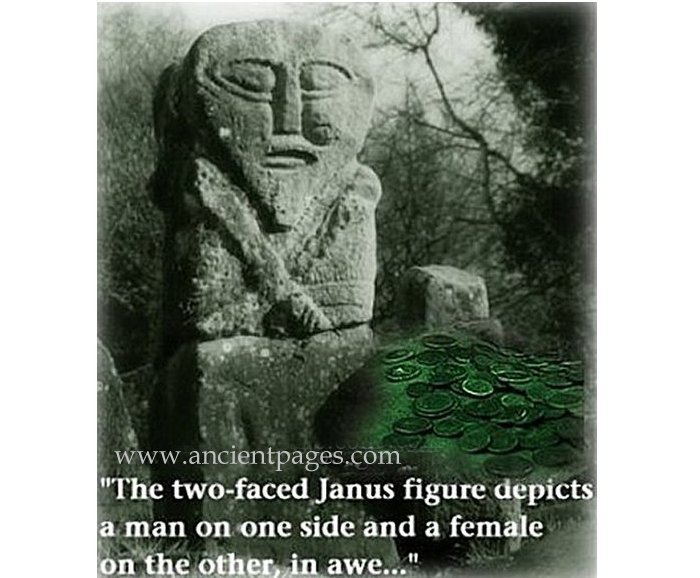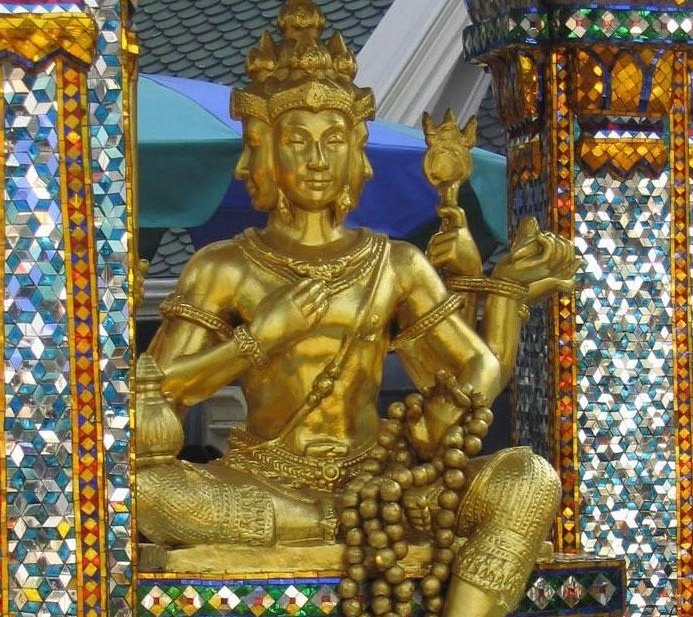Two-Faced Great Roman God Janus – Symbol Of All Beginnings And Endings
A. Sutherland - AncientPages.com - Two-faced deities were worshipped in many different cultures.
Today, we describe the Roman god Janus as the 'god of gods,' who appeared first on the most ancient lists of Roman gods. He protected doors, gates, passages, beginnings, and endings.
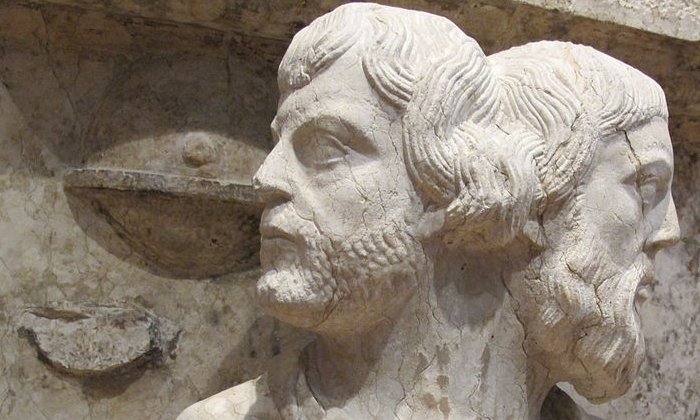 A statue of the Roman god Janus (sense 1) in the collection of the Museum of Ferrara Cathedral in Ferrara, Italy. Janus is traditionally depicted as having two faces, one looking to the past and the other the future. source
A statue of the Roman god Janus (sense 1) in the collection of the Museum of Ferrara Cathedral in Ferrara, Italy. Janus is traditionally depicted as having two faces, one looking to the past and the other the future. source
However, the most important is that the Romans believed he was the god of beginnings and endings. Janus symbolizes the doors and all kinds of openings between realms, states, and conditions.
"We see his name even today in the Western calendar for the year's first month—January. Because everything important has a beginning, Janus was the first god consulted at such events—marriages, births, seasons, days, deaths, and even new buildings and towns.
All religious ceremonies had their beginnings. If a festival of Neptune were held, Janus would be mentioned first so the celebration begins on the right footing. Romans held a fascination for omens. They were forever looking for signs to tell the future. As the present passed through the doorway into the future, Janus was always present demanding consideration from each righteous Roman citizen." 1
In a way, Janus was a prestigious divine figure traditionally consulted in matters related to divinity. It is believed he originates from the two Etruscan deities: Ana (goddess of beginnings) and Aita (god of endings and the underworld).
Janus figures at the Caldragh Graveyard, Northern Irleand. Credit: Kenneth Allen - CC BY-SA 2.0
We find enigmatic, pre-Christian Janus stone figures in a prehistoric place called Caldragh Cemetery on Boa Island. Janus' ancient sculptures are considered one of the most valuable ancient statues and landmarks, with their roots deep in the pre-Christian era.
It's a figure of two beings carved back-to-back and a smaller, less well-preserved one named the "Lusty Man" transported from nearby Lusty Beg island in 1939. The statues have unusually big heads compared to the rest of the body, with large eyes, a mouth, and a narrow nose.
They have crossed arms or legs in front, and between the two heads is an intentionally carved place for holding liquid of some kind or antlers.
The two-faced Janus figure has stood in the Caldragh graveyard on Boa Island, one of several islands in County Fermanagh, since the Celts put it up more than 2,000 years ago. Locals hold the 2ft tall figure, depicting a man on one side and a female on the other, in awe.
Who made these sculptures, and when were the Boa Island figures carved? What did this enigmatic carving mean for its creators? Was he an ancient Pagan fertility symbol, a warrior god, or a representation of the Celts' firm belief in the power of twins?
There have been many different theories regarding his origin and meaning. No one knows if any of them is correct. Perhaps, he represented someone else yet more powerful.
The Boa Island's two stone figures are between 2,000 and 3,000 years old and seem to date from Celtic times. They were part of the people's worship as they were perhaps a representation of their gods, according to John Cunningham, a local historian who dismisses the statues having anything to do with the Roman god Janus, also depicted with two faces.
"The heads are symbolically large because the Celts believed that the head was the seat of the soul and the center of man's life force and power," he said.
Sculptors often depicted him with two faces - one facing forward and the other facing backward. Because a person must enter a new room through a doorway, the Romans also honored Janus as the god of new beginnings.
The first month of the year is named after Janus - "January," a time when people look back to reflect on the year that just passed and forward to the year that begins.
Interestingly, the Roman god Janus had not his counterpart in Greek mythology, but his equivalent in the Etruscan pantheon was a sky god Ani, "god of beginnings, residing in the highest heaven and is sometimes depicted with two faces. It seems worth mentioning that "jauna" is the Etruscan word for "door."
Among the Bamana people of Central Mali, Africa, are Janus-like, two-faced puppets known as Merekum or Merekun. These two faces represent King and Queen and father and mother but also have a classical meaning: the past and the future.
Double herm. Marble, Roman copy after a Greek original. Image credit: Marie-Lan Nguyen - CC BY 3.0
For example, the coins of King Janus of Sicily depicted the figure of the god Janus and on their reverse side was a dove - a symbol of Father Janus as it was of Mother Jane or Mother Juno. And so, the Christian religion still recognizes the dove or pigeon as the symbol of the Holy Ghost.
It is possible that the three-headed Janus - was a triple oak god worshipped in the form of two vertical beams and a cross-bar because the door (with two lintels and side posts) was sacred to Janus, according to Arthur Bernard Cook (1868 – 1952).
Was the three-headed type of this figure the original from which the two-headed and four-headed types were developed?
Statue of Brahma in Bangkok, Thailand. Source
Some very early statues of Janus depict him with four faces, much like Brahma in Hinduism. Brahma's four heads, or the four faces, symbolize the four Vedas or Holy Scriptures of Hinduism. Another legend says that his four faces represent the four main directions of the universe – East, West, North, and South.
Most, however, show Janus with two faces—at times, one face was bearded and one clean-shaven. The sun rises and sets directly over the double-sided figure at the vernal equinox, and Janus has guarded the cemetery at Caldragh for more than 2000 years.
Today, it is really challenging to shed more light on a pre-Christian enigma of the Janus figures.
Written by – A. Sutherland AncientPages.com Staff Writer
Updated on October 6, 2023
Copyright © AncientPages.com All rights reserved. This material may not be published, broadcast, rewritten or redistributed in whole or part without the express written permission of AncientPages.com
Expand for referencesReferences:
- Clayton, M. Roman Mythology: A Captivating Guide to Roman Gods, Goddesses, and Mythological Creatures
More From Ancient Pages
-
 Discovered – Large Mysterious Structure Hidden Under The Sand In The Sahara Desert – A New Pyramid Or Something Else?
Archaeology | Nov 13, 2019
Discovered – Large Mysterious Structure Hidden Under The Sand In The Sahara Desert – A New Pyramid Or Something Else?
Archaeology | Nov 13, 2019 -
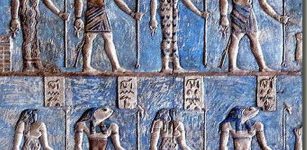 Number Eight Powerful Symbol In Ancient Traditions Of Many Cultures
Ancient Symbols | Dec 8, 2017
Number Eight Powerful Symbol In Ancient Traditions Of Many Cultures
Ancient Symbols | Dec 8, 2017 -
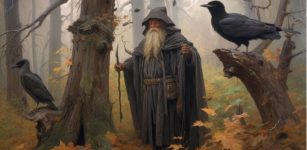 Evidence Ravens Share A 30,000-Year-Old Relationship With Humans
Archaeology | Jul 14, 2023
Evidence Ravens Share A 30,000-Year-Old Relationship With Humans
Archaeology | Jul 14, 2023 -
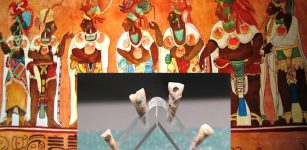 Ancient Maya Used An Unknown And Ingenious Method To Prevent Tooth Decay And Infections – Scientists Say
Archaeology | May 24, 2022
Ancient Maya Used An Unknown And Ingenious Method To Prevent Tooth Decay And Infections – Scientists Say
Archaeology | May 24, 2022 -
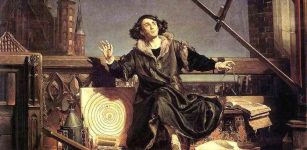 On This Day In History: Copernicus’ s Book Banned By Catholic Church – On Mar 5, 1616
News | Mar 5, 2017
On This Day In History: Copernicus’ s Book Banned By Catholic Church – On Mar 5, 1616
News | Mar 5, 2017 -
 Ancient Greeks Reached Iceland Before The Vikings – New Theory Suggests
Featured Stories | Dec 10, 2022
Ancient Greeks Reached Iceland Before The Vikings – New Theory Suggests
Featured Stories | Dec 10, 2022 -
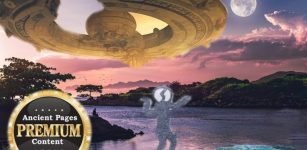 Secrets Of The Ancient Children Of The Moon Whose God Came From Outer Space In A Shining Flying Disc
Ancient Mysteries | Jun 1, 2020
Secrets Of The Ancient Children Of The Moon Whose God Came From Outer Space In A Shining Flying Disc
Ancient Mysteries | Jun 1, 2020 -
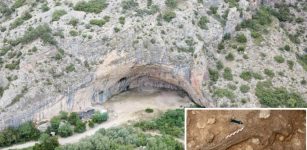 Rare Upper Paleolithic Human Remains Discovered In The Iberian Peninsula
Archaeology | Aug 12, 2021
Rare Upper Paleolithic Human Remains Discovered In The Iberian Peninsula
Archaeology | Aug 12, 2021 -
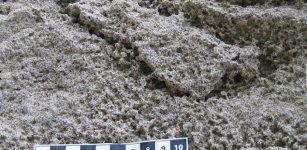 First Neanderthal Footprints Discovered In Gibraltar Dunes
Archaeology | Feb 14, 2019
First Neanderthal Footprints Discovered In Gibraltar Dunes
Archaeology | Feb 14, 2019 -
 Unique 3,000-Year-Old Logboat Found In River Tay – On Display In Perth, Scotland Again
Archaeology | Oct 30, 2023
Unique 3,000-Year-Old Logboat Found In River Tay – On Display In Perth, Scotland Again
Archaeology | Oct 30, 2023 -
 Piecing Together Scotland’s Religious Past With Shards Of Glass
Archaeology | Feb 28, 2023
Piecing Together Scotland’s Religious Past With Shards Of Glass
Archaeology | Feb 28, 2023 -
 Mysterious Greyfriars Kirkyard: A Cemetery In Edinburgh With Dark And Spooky History
Featured Stories | Sep 16, 2016
Mysterious Greyfriars Kirkyard: A Cemetery In Edinburgh With Dark And Spooky History
Featured Stories | Sep 16, 2016 -
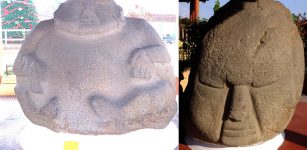 Mystery Of Ancient Magnetic Potbelly Statues In Mesoamerica Revealed – But Something Is Still Wrong
Archaeology | Jul 30, 2019
Mystery Of Ancient Magnetic Potbelly Statues In Mesoamerica Revealed – But Something Is Still Wrong
Archaeology | Jul 30, 2019 -
 The ‘Band Of Peace’ And Ancient Egyptian Technology – Is It Possible These Sites Were Power Generators?
Ancient Mysteries | Mar 19, 2017
The ‘Band Of Peace’ And Ancient Egyptian Technology – Is It Possible These Sites Were Power Generators?
Ancient Mysteries | Mar 19, 2017 -
 Bes: Egypt’s Intriguing Dwarf God Of Music, Warfare And Protector Against Snakes, Misfortune And Evil Spirits
Egyptian Mythology | Jul 31, 2016
Bes: Egypt’s Intriguing Dwarf God Of Music, Warfare And Protector Against Snakes, Misfortune And Evil Spirits
Egyptian Mythology | Jul 31, 2016 -
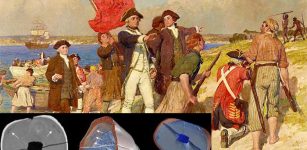 Unique Study Of Skeletal Remains Reveals Grave Health Of Australian Pioneer Settlers
Archaeology | Apr 7, 2022
Unique Study Of Skeletal Remains Reveals Grave Health Of Australian Pioneer Settlers
Archaeology | Apr 7, 2022 -
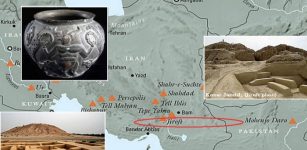 Jiroft’s Konar Sandal – Home To A Huge Ziggurat And Many Ancient Treasures
Featured Stories | Jun 8, 2021
Jiroft’s Konar Sandal – Home To A Huge Ziggurat And Many Ancient Treasures
Featured Stories | Jun 8, 2021 -
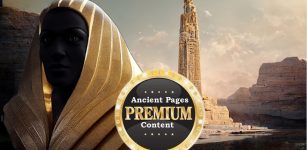 Translated Ancient Text Offers Evidence Of An Unknown Sophisticated Civilization Present In All Corners Of The World
Ancient Mysteries | Sep 18, 2022
Translated Ancient Text Offers Evidence Of An Unknown Sophisticated Civilization Present In All Corners Of The World
Ancient Mysteries | Sep 18, 2022 -
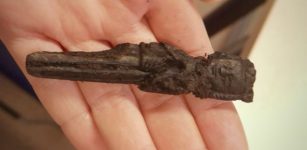 Strange Medieval Figurine With A Crown On The Head And A Falcon On The Arm – Is It A King Or A Queen?
Archaeology | Dec 16, 2021
Strange Medieval Figurine With A Crown On The Head And A Falcon On The Arm – Is It A King Or A Queen?
Archaeology | Dec 16, 2021 -
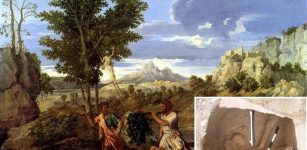 Mysterious Biblical Canaanites – What Ancient DNA Reveals About Their Fate
Archaeology | Jul 28, 2017
Mysterious Biblical Canaanites – What Ancient DNA Reveals About Their Fate
Archaeology | Jul 28, 2017


